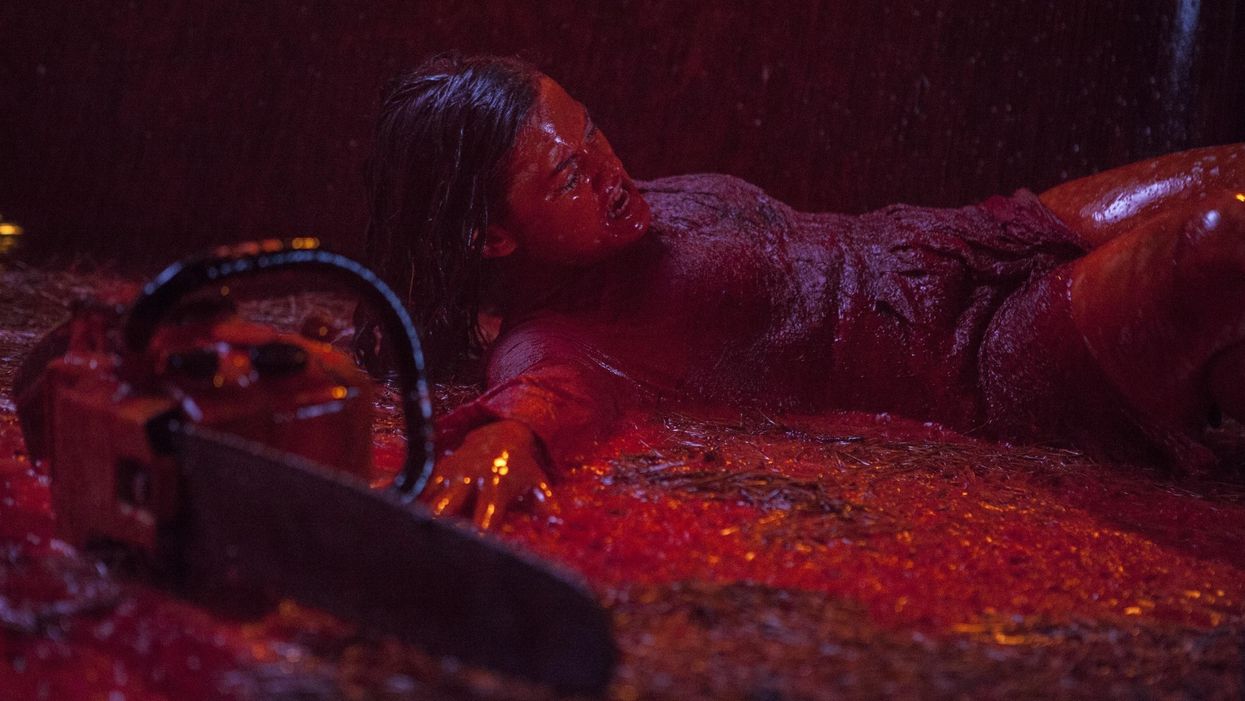Tips on How to Record Gory, Bloody, Stabby, Sound Effects for Your Horror Film
Sometimes, all it takes is a little fruit to make our horror films more gruesome.

Indie filmmakers usually don't have a whole lot of money to drop on a professional foley artist to design sound effects for their films, and downloading stock sounds can be a bit of a headache, what with copyright issues and low-quality files and all. But in this video tutorial by The Film Look, you not only get to learn best practices for recording sound effects, but also how to utilize one of the best, most versatile tools for recording nasty, gory sounds: the watermelon.
Foley is one of those areas of filmmaking that have a ton of trade secrets, some of which you can uncover if you look hard enough. But it's no secret that the watermelon is a great source of all kinds of sounds; this post by Asbjoern Andersen of A Sound Effect explains just how versatile they can be:
The number one go-to fruit for gory sound effects is the watermelon; there are so many great sounds hidden in it. You can crunch, cut and rip the peel apart which is great for dismemberment and ‘body-opening’. Dropping a watermelon from a ladder to the ground that it explodes is great for—well—exploding heads and bodies. Playing with the ‘guts’ of the melon by grabbing, whirling and punching right in it for really disgusting splattering sounds. Cutting through the pulp with a knife is great for flesh slices (combined with the ‘Ching’-sound of a knife).
- Metallic "Shings": Hecker used a leather ammo belt, a machete, and surgical steel blades to create Freddy Kruger's signature glove sounds.
- Blood splatters: Squeezing a water-soaked leather car chamois creates some great sounds for gushing, squishing, spraying blood. [Pro Tip: Adjust the pitch of your recordings for different sound effects.]
- Stabbing: Though watermelons are great, Hecker uses red and green cabbages for a "crunching stab sound."
- Bones cracking: Celery is a popular go-to for creating the sound of cracking bones. Wrap a stalk in a chamois and go to town—add a wet chamois to add an element of blood. Andersen says, "Carrots folded in a piece of leather make awesome ‘bone-snapping-under-the-skin’ sounds."
In terms of general sound effects recording, the tutorial offers a ton of great tips, like creating a sound-proof environment (or as sound-proof as possible), getting your microphone as close to the source as possible to avoid high gain levels, and recording a wide variety of different sound effects so you'll be able to produce better sound design.
What are some essential objects that you use for creating horror sound effects? Let us know in the comments below.
Source: The Film Look











![Ethos, Pathos, Logos: 20 Effective Ways to Advertise [Infographic]](https://nofilmschool.com/media-library/ethos-pathos-logos-20-effective-ways-to-advertise-infographic.jpg?id=34064614&width=600&height=600&quality=90&coordinates=560%2C0%2C0%2C0)

